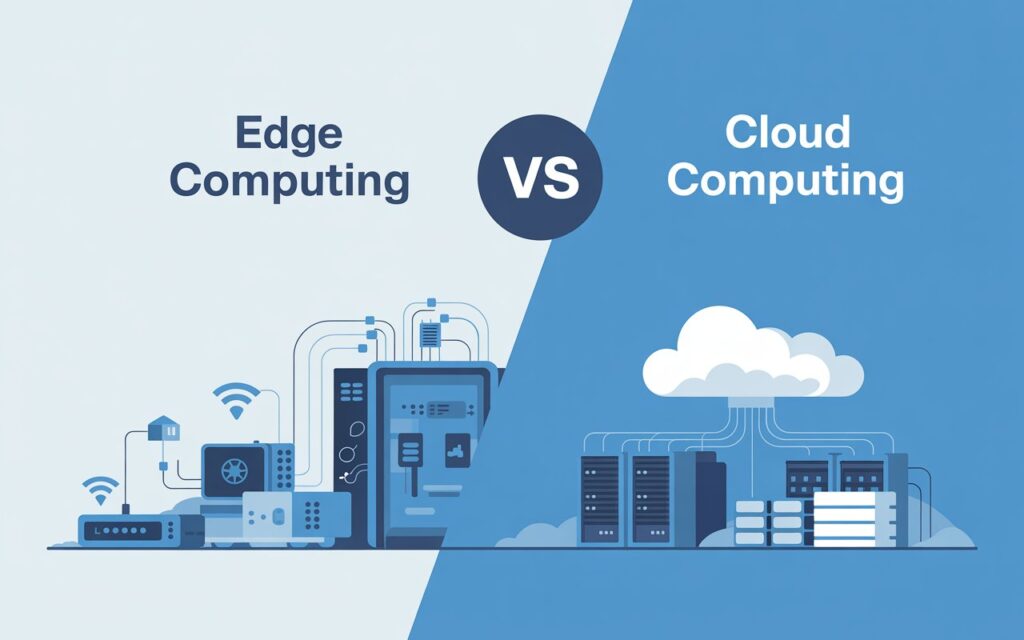
Cloud Migration Strategies in Cloud Computing: A Complete Guide
Organizations worldwide are speeding up their digital transformation journeys, the key to revolution is found in cloud computing. But moving to the cloud is more complicated than just moving data across systems. It entails meticulously thought-out tactics that support organizational objectives, guarantee minimal disturbance, sustain performance, and ensure cost effectiveness. Organizations may choose the best course of action and ensure a seamless transition that generates long-term business value by being aware of cloud migration options.
The Six Core Cloud Migration Strategies Explained
The “6 Rs of migration” form the backbone of modern cloud adoption frameworks. Each of these strategies addresses different organizational needs, allowing companies to balance speed, cost, and modernization.
1. Rehost (Lift and Shift)
The rehost strategy is the process of moving applications directly to the cloud without altering the code. Often referred to as “lift and shift,” this approach is quick and easy, which makes it suitable for businesses that need to migrate quickly or have limited budgets. The downside is that applications may not leverage all of the cloud native features such as scalability and automation.
2. Replat form (Lift, Tinker, and Shift)
Replat forming makes minor adjustments during the migration process to make applications cloud ready. While not as far-reaching as a full redesign, these tweaks are more efficient and cost-effective. It is a balanced approach for organizations that want to reap the benefits of the cloud without having to do extensive development.
3. Repurchase (Drop and Shop)
By taking this path, organizations cease to use existing applications and deploy Software-as-a-Service (SaaS) solutions. This approach eliminates the responsibility of infrastructure management but ensures the availability of modern features. For example, enterprises may replace on-premises CRM systems with cloud-based alternatives such as Salesforce or HubSpot.
4. Refactor (Re-architect)
Refactoring involves re-architecting applications from the ground up using cloud-native technologies such as microservices, serverless computing, and containerization. While costly and time-intensive, this approach provides maximum long-term benefits by ensuring applications are highly scalable, resilient, and future-ready.
5. Retire (Eliminate)
During migration assessments, organizations often find that certain applications are no longer necessary. Retiring these reduces licensing costs, simplifies infrastructure, and eliminates unnecessary complexity.
6. Retain (Revisit)
Not every application is ready for an instant cloud transfer. Because of technical, security, or regulatory limitations, some must stay on-site. These are kept for a short time and then reviewed later as compliance frameworks and technology advance.

Critical Cloud Migration Steps in Cloud Computing Implementation
Migrating to the cloud requires a phased and structured approach to ensure success. The following stages help organizations reduce risks and maximize efficiency.
Pre-Migration Assessment Phase
This step comprises auditing existing infrastructure, applications, and workloads. Organizations detect interdependencies, conformity needs, and performance requirements. A strong assessment prevents unexpected complications later in the process. See cloud readiness assessment or identity and access management services for ensuring that audit steps align with security and compliance. For example, SK Technology offers Azure Identity and Access Management Services in Dubai to help organizations map user roles, groups, and permissions before migration.
Migration Planning and Design
At this stage, detailed roadmaps are created, outlining timelines, team roles, cost estimations, and risk mitigation strategies. Selecting the right cloud service providers and target architecture also falls under this phase. Organizations may also consider enhancing monitoring and security in their plan—see Advanced System Monitoring Services in UAE for solutions that support visibility during migration and after,
Pilot Testing and Validation
Instead of migrating everything at once, businesses first move smaller workloads. This testing secures compatibility, validates chosen strategies, and assists refine processes without exposing large-scale disruptions. It’s also a phase where cloud security must be tested SK Technology’s Cloud Security Consulting Services in Dubai UAE helps audit and design security controls early.
Production Migration Execution
With lessons learned from the pilot, organizations move to full-scale migration. Teams synchronize data, manage cutovers, and ensure real-time monitoring to minimize downtime. Ongoing security and identity controls continue to be critical here, especially when integrating tools such as Microsoft 365. For organizations using those, SK Technology’s Microsoft-365 Security Services in UAE offer post-migration security of email, sharing platforms, and collaboration tools.
Post-Migration Optimization
Once applications are running in the cloud, continuous monitoring ensures systems remain cost-efficient and high-performing. Optimization may involve resizing resources, automating workloads, or integrating advanced analytics. Keeping a robust security posture and access controls remains important to avoid drift and unauthorized access.
Understanding Different Cloud Migration Strategies and Process Options
Beyond the six Rs, additional strategies help organizations fine-tune their migration journeys.
- Rehosting Strategy (Lift and Shift)
- Refactoring Strategy (Cloud-Native Optimization)
- Revising Strategy (Partial Modernization)
- Rebuilding Strategy (Complete Redesign)
- Replacing Strategy (SaaS Adoption)
- Retiring Strategy (Application Decommissioning)

Common Cloud Migration Challenges and Solutions
- Data Security and Compliance Concerns Migration often raises questions about data protection. Strong encryption, identity management, and adherence to compliance frameworks ensure security throughout the process. Cloud security consulting (see Cloud Security Consulting Services in Dubai UAE) and Azure Identity and Access Management (see Azure Identity and Access Management Services in Dubai) are key.
- Application Compatibility Issues Legacy applications may not work seamlessly in the cloud. Modernization or SaaS alternatives can resolve these issues.
- Downtime and Business Disruption Careful scheduling, backup systems, and phased migration help minimize disruptions. Also using system monitoring services during migration helps detect performance bottlenecks (see Advanced System Monitoring Services in UAE).
- Cost Management and Budget Control Without proper planning, migration costs can escalate. Cost monitoring tools and right-sizing of resources ensure financial efficiency.
- Staff Training and Change Management Teams need training to adapt to new systems. Change management initiatives ease the transition and build confidence.
Industry-Specific Migration Considerations
- Healthcare Organizations: Require HIPAA compliance and robust data security.
- Financial Services: Must follow strict audit trails and security frameworks.
- Retail Businesses: E-commerce platforms must remain operational during migration.
- Manufacturing Companies: IoT and production systems demand specialized migration approaches.
- Educational Institutions: Student records and learning platforms need secure transitions.
- Government Agencies: Require adherence to national compliance standards and high-level security.
Best Practices for Successful Cloud Migration
- Comprehensive Planning and Assessment Migration success begins with understanding the current state of IT systems and aligning strategies with business objectives.
- Stakeholder Communication and Training Keeping all stakeholders informed fosters alignment. Training programs ensure employees adapt smoothly to new environments.
- Security and Compliance Focus Integrating compliance from the start prevents costly delays and ensures smooth audits. Services like Azure Identity and Access Management and Microsoft-365 Security protect data, permissions, identity during and after migration.
- Performance Monitoring and Optimization Continuous system monitoring guarantees resource efficiency and long-term cloud value. Using advanced monitoring (see Advanced System Monitoring Services in UAE) supports this.

Frequently Asked Questions About Cloud Migration
- Which cloud migration tactics work best for firms using cloud computing?
The most effective strategies include rehosting for speed, refactoring for optimization, revising for partial modernization, rebuilding for redesign, and replacing with SaaS for flexibility. - How long do typical cloud migration steps in cloud computing take to complete?
Depending on complexity, migrations typically take between 6 to 18 months. - What should businesses expect during the cloud migration explained process?
They should expect assessments, detailed planning, phased execution, staff training, and ongoing optimization. - How do cloud migration strategies and process approaches minimize business disruption?
Phased execution, backup systems, and parallel operations minimize downtime and ensure continuity. - What factors determine the best cloud migration strategy for specific organizations?
Key factors include infrastructure complexity, compliance requirements, application architecture, budget, and business goals.
Ready to Begin Your Cloud Migration Journey?
Cloud migration is more than a technology shift—it is a strategic transformation. By adopting the right strategies, organizations can reduce costs, improve agility, and ensure future-ready operations. Professional migration specialists provide the expertise and structure needed for success, ensuring your cloud journey delivers measurable results and long-term value.If you like, I can send you a final polished version (formatted, SEO-optimized) with these internal links embedded, so you can directly use it on your website or as a whitepaper.


